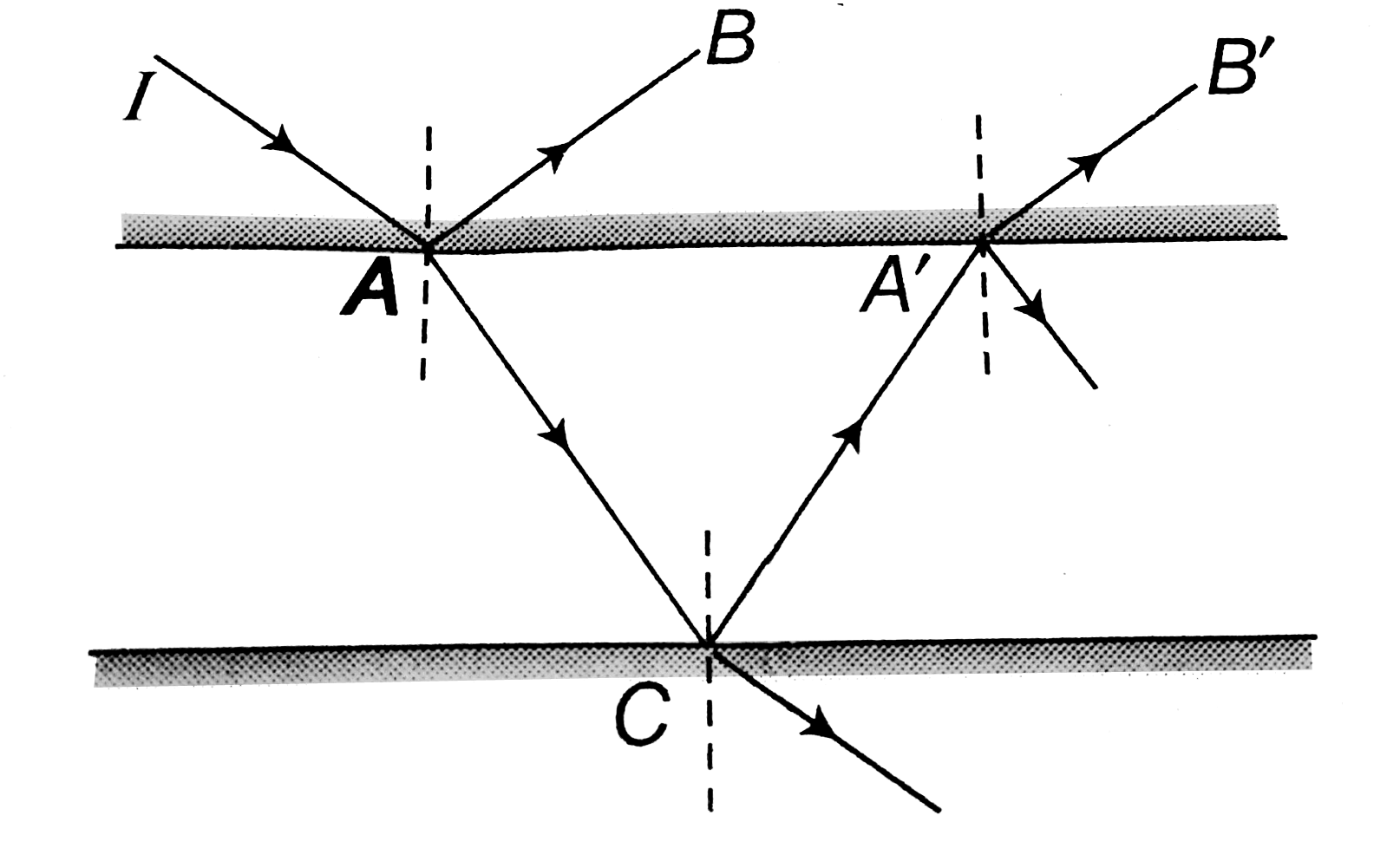In the shown figure answer the following two question.

If Pi,Pr,Pt are powers of incident, reflected and transmitted waves and Ii,Ir,It the corresponding intensities , then
Pi=Pr+Pt
Ii=Ir+It
both( a) and (b) are correct
both ( a) and (b) are wrong
The correct Answer is:A
Step by step video, text & image solution for In the shown figure answer the following two question. If P_(i),P_(r),P_(t) are powers of incident, reflected and transmitted waves and I_(i),I_(r),I_(t) the corresponding intensities , then by Physics experts to help you in doubts & scoring excellent marks in Class 11 exams.
Topper's Solved these Questions
- BOOK - DC PANDEYCHAPTER - WAVE MOTIONEXERCISE - Matrix Matching16videos
WAVE MOTION
- BOOK - DC PANDEYCHAPTER - WAVE MOTIONEXERCISE - Integer Type Question11videos
WAVE MOTION
- BOOK - DC PANDEYCHAPTER - WAVE MOTIONEXERCISE - More Than One Option is Correct23videos
WAVE MOTION
- BOOK - DC PANDEYCHAPTER - VECTORSEXERCISE - Medical enrances gallery9videos
VECTORS
- BOOK - DC PANDEYCHAPTER - WORK, ENERGY & POWEREXERCISE - Level 2 Comprehension Based2videos
WORK, ENERGY & POWER
Similar Questions
In the shown figure answer the following two questions

If Pi,PrandPt are powers of incident, reflected and transmitted waves and Ii,It the corresponding intensities, thenView SolutionUnpolarized light is intensity I0 passes through two polaroids P1 and P2 such that pass axis of P2 makes an angle θ with the pass axis of P1. A third polaroid P3 is placed between P1 and P2 with pass axis of P3 making an angle β with that of P1. If I1,I2,I3 represent intensities of light trnasmitted by P1,P2,P3, determine the values of angle θ and β for which I1=I2=I3.
View Solution
Knowledge Check
- Question 1 - Select One
A travelling wave is partly reflected and partly transmitted from a rigid boundary. Let ai,arandat be the amplitude of incident wave, reflected wave and transmitted wave and Ii,IrandIt be the corresponding intensities. Then choose the correct alternatives.
AIiIr=(aiar)2BIiIt=(aiar)2CIrIt=(arat)2DAll the above - Question 2 - Select One
A ray of light intensity I is incident on a parallel glass-slab at a point A as shown in figure. It undergoes partial reflection and refraction. At each reflection 25% of incident energy is reflected. The rays AB and A′B′ undergo interference. The ratio Imax/Imin is
 A4:1B8:1C7:1D49:1
A4:1B8:1C7:1D49:1 - Question 3 - Select One
In the figure shown a sinusoidal wave is generated at the end A the wave travels along positive x-axis and during its motion it encounter another string BD at the junction 'B'atx=0.The density of string AB and BC are ρand9ρrespectively and their radii of cross sections are 2randr. The wave function amplitude and wavelength of incident wave are respectively ypAiandλr Similarly for reflected and transmitted wave these peremeters are yr,Ar,λrandyi,Ai,λi

The ratio of wavelengths λrtoλi(i.e.λr:λt) will beA1:1B3:2C2:3DNone of these
In the following questions, select the missing term.
F,I,M,P,T,?View SolutionA mixture of plane polarised and unpolarised light falls normally on a polarising sheet. On rotating the polarising sheet about the direction of the incident beam, the transmitted intensity varies by a factor 4. Find the ratio of the intensities IP and I0 respectively of the polarized and unpolarised components in the incident beam. Next the axis of polarising sheet is fixed at an angle of 45∘ with the direction when the transmitted intensity is maximum. Then obtain the total intensity of the transmitted beam in terms of I0.
[32,5I04]View SolutionState clearly how an unpolarised light gets linearly polarised when passed through a polaroid.
(i) Unpolarised light of intensity I0 is incident on a polaroid P1 which is kept near another polaroid P2 whose pass axis is parallel to that of P1. how will the intensities of light, I1 and I2, transmitted by the polaroids P1andP2 respectively, change on rotating P1 without disturbing P2 ?
(ii) Write the relation between the intensities I1andI2.View SolutionIn the figure shown a sinusoidal wave is generated at the end A the wave travels along positive x-axis and during its motion it encounter another string BD at the junction 'B'atx=0.The density of string AB and BC are ρand9ρrespectively and their radii of cross sections are 2randr. The wave function amplitude and wavelength of incident wave are respectively ypAiandλr Similarly for reflected and transmitted wave these peremeters are yr,Ar,λrandyi,Ai,λi

The ratio of amplitudes ArtoAris(i.e.Ar:At) will beView SolutionIn the figure shown a sinusoidal wave is generated at the end A the wave travels along positive x-axis and during its motion it encounter another string BD at the junction 'B'atx=0.The density of string AB and BC are ρand9ρrespectively and their radii of cross sections are 2randr. The wave function amplitude and wavelength of incident wave are respectively ypAiandλr Similarly for reflected and transmitted wave these peremeters are yr,Ar,λrandyi,Ai,λi

Which of the following statement regarding phase difference Δϕ between waves at x=0 is true?View Solution

